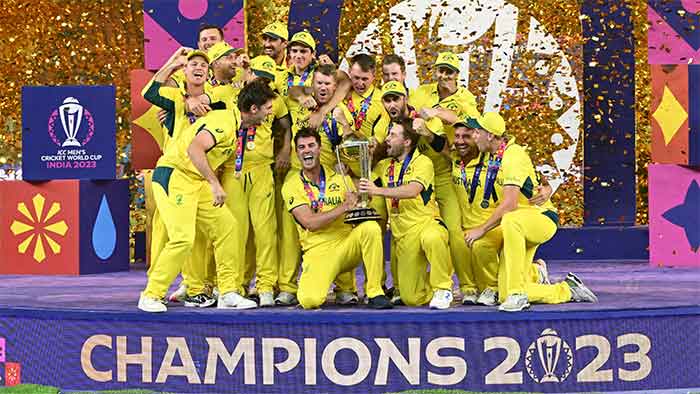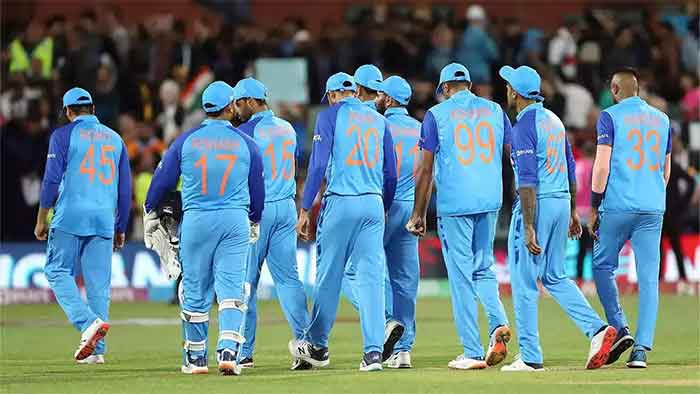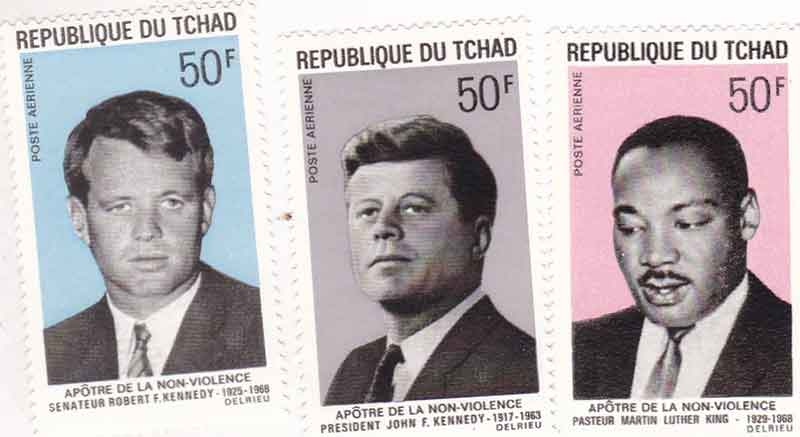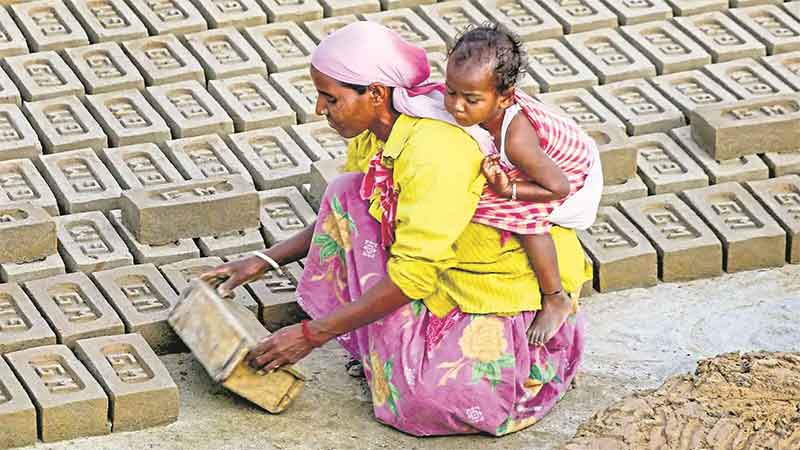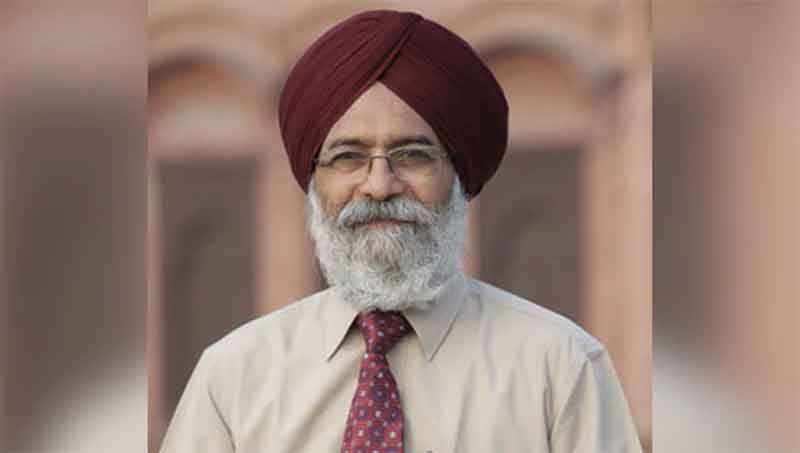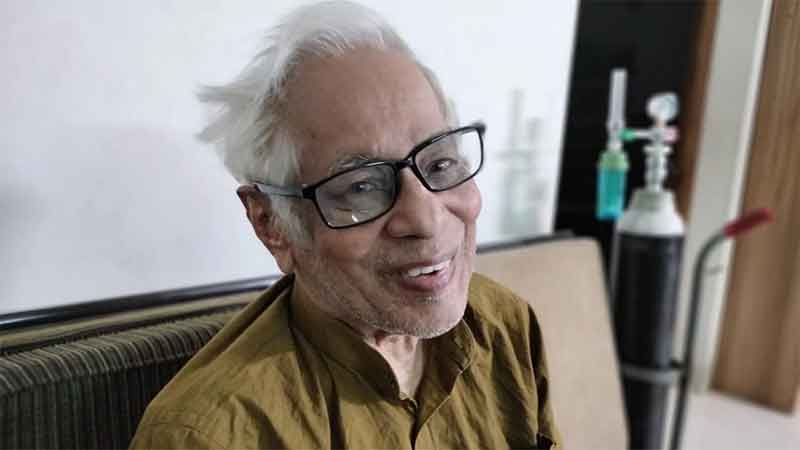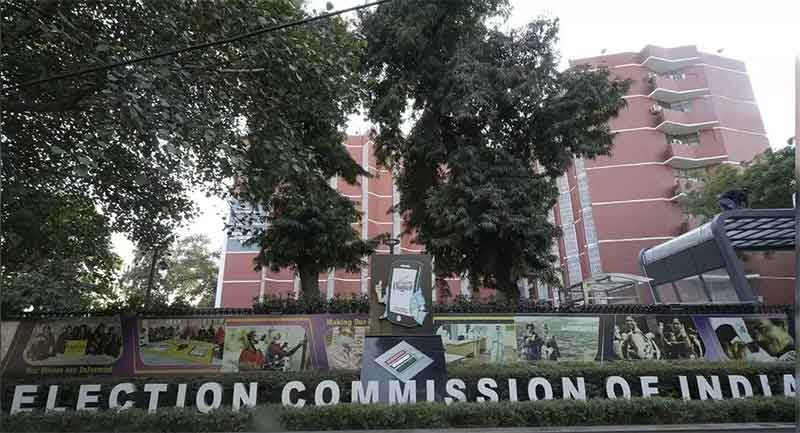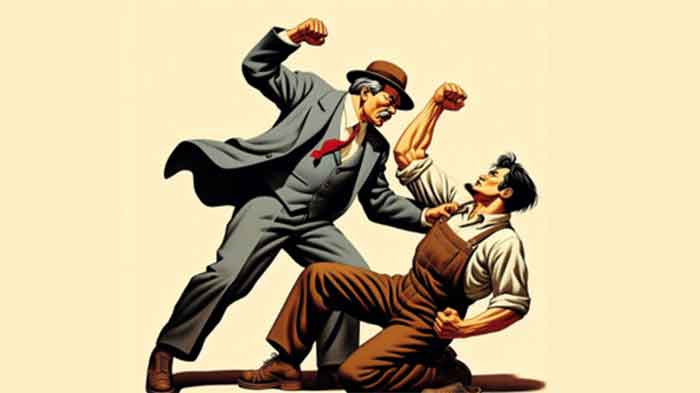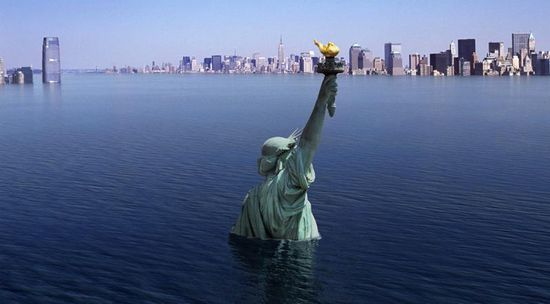
In 1988 on August 22nd, I became the 16th Indian to swim the English Channel and in this work I am summing up the challenge involved and how its experience or training for it has so many similarities with that of a the life of a Marxist or social revolutionary.
Few challenges are as daunting as swimming the English Channel. It is not only about the distance but confronting the bitter cold and the most powerful currents. I can never forget the gruelling hours I spent in acclimatizing myself to the conditions before swimming it. The feat literally takes mental resilience to it’s highest scale of intensity. It reminds one of meditation.
Till today 1881 swimmers have swum the English Channel, with 63 percent male, and 37 percent female. Overall 2,428 solo swim shave been accomplished.
MY PERSONAL STORY
In many ways when I swam I resurrected the spirit of Mihir Sen who was the first Indian swimmer to cross the channel. So did my contemporary swimmers like the polio handicapped Rajaram Ghag ,11 year old Abhijeet Rao and 14 year old Naina Mahalapurkar ,who too crossed it. Sea swimming champion swimmers failed like Dharamtar-to Gateway record holder Manoj Erande, and World champion Renatta Agondi .who tragically perished when attempting it.
Unlike the others I was influenced by revolutionary ideology around 4 years earlier or what was morally Marxism Leninism -Mao thought. The roots of the endurance or reserves of Stamina built up were through training for swimming pool inter collegiate competitions and State meet from 1984-85 where I trained between 8-11 kms daily. The 1st genuine flash I made in sea waters was when swimming for Uran to Mumbai. in January 1986 in a technical record time of 2 hrs 56 mins.In February 1987 I swam the 32 km INS Hamla to Dadar Chowpatty Sea race securing 10 th place, in a time of 10 hours 58 mins.It is then that I realized that I possessed the mental resilience or fortitude to combat the most challenging barriers in sea swimming.
I can’t forget how in so many junctures I felt the end was there, but it just did not come. That swim untapped my inner power as never before .In 1988 when swimming Dharamtar to Gateway of India I cruised home effortlessly in 9 hours 44 mins,with the tide completely in my favour.
For swimming the channel, I continuously logged distances of around 11 km for three months. In the Channel it took me around 2 weeks to acclimatize myself to get into the thick of the proceedings. However once I was toned I felt like a ship revived and would cruise up and along the Dover coast for 3-6 hour swims. In those practice sessions I virtually drew the ultimate reservoirs of my energy. And immunised my body to bear the pain. In the actual swim I cruised till midway but in the 2nd half fought a virtual battle with the waves to touch the coast of Calais,semi-conscious.I felt the subtle difference between facing the actual battle and the practice sessions. Ironic I never knew that I had touched the end, and my hands were still moving on the shore. I would not have words to adequately thank my mother for her support in preparations or in the Channel swim, who finally pulled me into the boat.
After having excelled in academics at 13+ in Birmingham in England, I had a setback after returning to India, hardly faring too well in matriculation. I topped my class in the final year of Eversfield preparatory school and got admission into the Solihull Public School. After hardly doing well the previous year I literally rose from dire straits, similar to triumphing in a channel swim. My thirst for achieving excellence first in Channel swimming was to avenge the reversal in academics, and redeem myself. Arguably the inability to adjust to India at such a crucial age and parental conflicts contributed to this.
To participate in club and inter-collegiate events I trained 4,000 metres twice a day. I have strong memories of logging 220 laps of the Willingdon Swimming pool in Mumbai in the morning. I would again workout in the evening at the Bombay Gymkhanna.I would swim sets of 1,000 metres 4 times within one and a half hours. I secured 3rd place in the Inter-collegiate swimming in 400 metres Freestyle and 100 metres. I also attained 3rd place in the C.C.I Western India Championships in the 400 and 800 yards freestyle. Here I owe a lot to the judicious efforts of late Naval Bathena.I have vivid memories of how I would galvanize energy within and after the workouts and the inspiration to triumph blazing in my heart. It is hard to describe the inner energy flowing within me. My entry into the arena of competitive swimming coincided with my joining the ranks of the democratic rights movement, through joining Lok Shahi Hakk Sanghatana.
I was later tutored by Mr Kishan Singh of P.M.Hindu Bath and Mr. Jadhav at the Bombay Gymkhana. I had increased my workouts to about 10 to 11km daily. They would be divided into sessions only kicking, only pulling (Only using Arms) and then swimming intervals of 400 metres or 200 metres each. I qualified for the Maharashtra State finishing 7th but couldn’t qualify for the Nationals. I had high stamina but I had some stroke defects .According to my coach the power in my pull was ineffective.
My debut in sea swimming took place in 1985 swimming Sunk Rock to Gateway of India in 51 mins. Although not so successful in competitive swimming my gruelling training conjured up my reserves of endurance to successfully complete swimming marathons in the sea.
I now wanted to cross Uran to Gateway of India. (An island 12 km from Mumbai.) I logged continuous stretches of 6,000 metres twice a day as practice. On the day I cruised along to swim in the then record of 2 hrs 56 mins. It was a most peaceful swim and I felt much more at ease with myself than in the Swimming pool the waves simply seemed to pull me along. It is here that I felt most like a person in meditation and a crusader for fighting for man’s liberation. At that point I was greatly drawn to serving the democratic rights movement.
The following year in 1986-1987 I was unsuccessful in competitive swimming but in the I.N.S.Hamla to Dadar Chowpatty Swimming race I had one of my major personal triumphs .In the pool I did workouts of 5 km, twice a day. I also did an 8 km swim at a stretch. I finished the 35 Km.course in 10 hrs 58 mins finishing 11th. For most of the race I hardly knew where I was placed and for a prolonged period I was simply awaiting the finish. The guide kept indicating the Finish was around the Corner.
However my willpower and determination persisted and I simply trugged along like a machine. In the end I heaved a huge sigh of relief! I feel like mentioning how in this similar juncture I was inspired by the leftist and Naxalite martyrs against the Khalistani movement in Punjab and how when practicing they flashed through my mind like flame. My academic performances declined but I feel that without my bond towards revolutionary ideology I may never have scaled my first peak. I can’t forget my counselling sessions on my inner conflicts, delving into the deep regions of the subconscious mind. Another important memory I gave that year was participating in the Go To Villages Campaign of the revolutionary student Organisation Vidhyarti Praghati Sanghatana in Sangli,to promote cause of agrarian movement in rural areas. It had a major impact on my inner transformation, interacting with activists and peasants. The spirit of naxalbari simply shimmered in my heart with the same power of the waves of an ocean.
I now believed I could swim the English Channel. As a trial I did the 35 km stretch from Dharamtar to Gateway of India. I completed it in 9 hrs 44 mins, being under-prepared. This was like a practice swim for the Channel. I simply cruised along with ease.
The Following months I logged 12 km a day in my 50-metre pool. I had no doubts about my stamina. My main objective in crossing the Channel was to prove my worth to the world and make a name.
My coach Kishan Singh and I arrived in June. My mother was to come later. At first I found the temperature of the Channel waters unbearable. I simply shivered and took a long time to recover. Gradually I could stay for 20 mins, then an hour and eventually I could do 3-6 hour workouts. (After a month) I would simply blaze in the water and can never forget how I would swim from one end of Dover to the cliff on the other side. Every half an hour or one hour I would take a feed. Through maintaining my diet my mother played a big role in my fitness. She simply took care of my diet cooking my meals.
It is fascinating that in the rest periods I would be continuously researching on the merits or demerits of Socialist ideology. -in China and Russia. Somehow I was attracted by the changes of Gorbachov and Perestrioka and could not read through his un Marxist leanings. Ironically I even met a Trotskyite group whom I interacted with, asserting my differences.
As a preliminary I participated in the Lake Zurich International Marathon 26 km race. Here I simply swam with the utmost determination. For long periods I felt the end was coming and I seemed to be wearing down. However that inner courage won the day for me and finally I was relieved to see the end. My mental strength won the day for me.
On the same day as my Zurich Lake swim two Indian Swimmers created a record becoming the youngest ever boy and youngest asian female respectively. Abhijeet Rao at 11 years became the youngest ever to cross the Channel, while Naina Malhapurkar became the youngest Asian. On the same day as me Rajaram Ghag, a polio-affected victim was to attempt the Channel. A day before my attempt a major tragedy had occurred Renata Agomdi, a Brazilian Champion who had just won the Capri-Naple International Marathon died of hypothermia.The cause was that her body had not acclimatised itself to the Channel waters. After 9 hrs she was lifted out dead. It was one of swimming sport’s saddest moments.
I was 99% sure I would cross the Channel. I understood my endurance and reserves of physical and mental strength. On August 22nd I started my expedition. For the first 6 hours I was cruising. I could see the cliffs of Calais and the end seemed a formality. However then a storm broke out. With determination I chugged along like a machine. I was determined to fight the battle till the very end like a soldier fighting to the very end in a war. I had not only to tap the highest reserves of my physical energy but also my mental determination. After 12 -13hrs I felt the end was almost there but I was battling with the waters. Upto 14 hrs I was still fully conscious. However after that my mind was slowly going into a state of semi-consciousness. The end was just round the corner. After 15 hrs 2 mins I rolled over the Calais beach crawling not realising the end had come. My mother eventually told me the swim was over and affectionately I kissed her. But for her care I would never have made it. After that I was dragged into the boat where I simply fell asleep. On getting up after an hour my mother informed me I had made it. More than the physical battle I had won the spiritual battle. More than my mind it was my heart that won the day!
I would love to print a copy of the Observer of my Channel swims which perfectly illustrates the ups and downs of channel swim. In many ways the experience explored or traversed areas of the subconscious mind and manifestation of the Universal energy.
I attribute my success not just to my final months of training in the Channel or before in the Swimming pool, but to the vast reservoirs of endurance I built up training for competitive swimming in 1984 and 1985.
I had become the 1st ever member of Pransukhlal Mafatlal Hindu Bath,to achieve the feat. Stalwarts like the former national swimming champion Tingoo Khatau failed on 3 occasions’ was the 432nd person and 16th Indian to achieve the feat. The same year the world long distance champion Renata Agondi perished while the record holder from Dharamtar to Gateway of India,Manoj Erande also failed. Unlike some legends like Mihir Sen and Aarti Saha or Taranath Shenoy, I completed the Channel on the first attempt. I was felicitated by the PM Hindu bath in December, with cricketer Sandeep Patil distributing the awards. I was also the 1st ever student of Elphinstone college and Cathedral and John Connon school to swim the Channel.
The greatest memories I have of swimmers in my time is of Rupali Repale triumphing inspite of having such unhurried preparation and poor conditions,Rajaram Ghag who suffered from polio ,Abhijeet Rao who accomplished this feat at such a young age of 11 and of the record breaking swims of Bijoy Jain and Anita Sood.More than the sheer speed I had respect for enduring the vagaries of the channel for long durations. I wish I could have compiled my memoirs in the form of a book.Rajaram Ghag’s story would have been an epic, emerging from such a poor, working class background. I can’t forget the sheer power he exuded in the water, being a mascot of the handicapped sportsman. Of the foreign swimmers my greatest heroes were Phil Rush from New Zealand who completed a 3 way swim in 38 hours and Yagasish from Hungary who complete it at the oldest age ever of 65 years.
After crossing the Channel somehow my inclination turned towards inner or spiritual revolution, similar to that of Jiddu Krishnamurty.Somehow I was also inclined towards an academic Study of Marxism and Socialism.
I would strongly feel that even if not an activist in that time or for a considerable period it was the spirit of the service towards the people and inclination towards Mao thought that enabled me to completely tap the reservoirs of my potential in the Channel. No doubt it caused conflict and turmoil in stages being so young and not having adequate maturity. I had a confident tussle with psychological and emotional conflicts after passing out from school. I can’t forget how my grandfather would be critical of my participating in leftist political work on grounds of my being too young. Unfortunately I had a setback in academic performances, losing a year in 1986-87.
I visualize or experience how even applying dialectics of Mao Zedong thought can create a successful Channel crossing. In many ways swimming the Channel had the same ingredients as the long March led by the Chinese Communist party in 1935.Although being involved with revolutionary activism morally supporting Marxism-Leninism my swimming experience had more spiritual overtones. I remember even leftist activists asking me what a fantastic experience it was to swim the Channel. At the time when I accomplished the feat I was not so inspired towards revolutionary ideology as in earlier times, but a series of events rekindled my spirit into the fold of the revolutionary movement. I see a dialectical link between my inclination towards Mao thought and swimming the Channel, and how in turn my swimming the Channel paved the way to my pursuit of Mao thought. I can’t forget the conflicts in my mind in the year before crossing the channel, on the personal and political level. There was a continuous heated debate within me about the legitimacy of Socialism in USSR in Stalin’s era,on Perestroika,on the Role of Gandhi in independence etc.
In the post-channel days I became a cadre in the Marxist Leninist revolutionary movement though I flitted into different streams, with two of the Mao thought trend like the Chandra Pulla Reddy and Red Flag Groups.. I virtually went into a new transition period. Even if I experienced confusion, inconsistency or wavering in many junctures or even went astray, but still rekindled the energy of the Channel swim. This was apparent in demonstrations or surrendering a meal giving press releases of a trade Union front or distributing revolutionary literature. The main highlight was my involvement in Student group Pragatisheel Vidhyarti Sanghatana,inclined to Mao thought trend. In many ways dipping my feet in the waters of mass revolutionary work were more challenging than even the Channel.
In similar ways I lit the spark of the Channel swim in my job as a supervisor in the Taj Air caterers, although not confirmed or doing the allotted task of handling the flight operations. Even if doing menial work I was proud of the act that I pushed trolleys with dignity to monitor the items. From my early thirties I partially resurrected the spirit of my swimming days swimming 4-5 km continuously daily, and even had aspirations of completing a double way Channel swim. My writings from sports to politics and political activities gave me glimpses of the laborious and resilient quality of a Channel swimmer and its passionate element. It is pertinent that my comeback into regular training coincided with my dipping the ink on revolutionary ideology and movements and moral support in service of revolutionary movement. I can’t forget days when I combined my rigorous swimming practice with supporting the struggle of the Tata power project workers after the suicide in protest of 2 workers as well as assisting a democratic working class paper. In my daily swimming workouts, particularly from 2001-07, I got vibrations of dipping my feet again in the Channel waters, to even achieve a double way swim. Till this day I have aspirations of doing it again and resurrecting the glory.
I was overjoyed with the appreciation Revolutionary Democracy journal editor Vijay Singh, Maoist writer Professor Amit Bhattacharya or even social activist Bela Bhatia. expressed for my Channel swimming feat.
I hope the Indian Channel swimmers sparkle the spirit of liberation and inspire people to take up long distance swimming. How wonderful it would be if the long distance swimming potential of the Indian people is tapped with regular training camps, even in seas and rivers. India can be proud of being one of the finest performers at the Channel, with a record better than swimmers from any South Asian country or African nation. I regret that the majority of the community of Channel swimmers was not felicitated properly, by the nation or state. Perhaps India should emulate the example of the ex-Socialist countries, in integrating sports culture at the very grassroots. It was my regret that the ex Socialist countries discouraged Channel Swimming like USSR or China ,possibly on grounds of spirit of individualism. I am overjoyed that in recent years a Chinese swimmer has crossed the English Channel.
I regret that I can hardly name Channel swimmers who were an integral part of a revolutionary movement .How heartening it would be if Channel swimmers could be absorbed into the revolutionary movement or speak out against imperialism or fascism. I wish today many swimmers undertook the challenge of crossing the Channel to propagate anti imperialist spirit, particularly in context of saving the environment. Maybe clubs should be formed worldwide amongst progressive activists to promote spirit of adventure and conquest.
There is an abject or striking similarity in the mindset, mental tenacity or resilience of revolutionaries striving for liberation, with the task of swimming the English Channel. Revolutionary experiences the same twists and turns as a swimmer when crossing the Channel as well as traverses tortuous paths as hazardous as the choppiest seas of the English Channel. The changes in the tides or weather remind us of the journey or path of life or a revolutionary movement iteslf,with its’ incredible twists and turns or change in fortunes. Few feats are more a manifestation of spiritual energy or an expression of the soldier will to overcome a barrier. It reminds one of the ups and down seven of the life of a revolutionary or a movement in terms of reviving from dire straits. The very battle with the water is reminiscence of the struggle of life or within a revolutionary movement itself, not only to reach a goal but to survive against all odds.In fact I find a perfect symmetry between the struggle of a Marxist or social revolutionary with that of a Channel swimmer not only in the waters but in actual life itself. The transition period of someone evolving into a Channel swimmer could make a book in itself. Above all a Channel swim gives a sportsman the sense of oneness and detachment. The Channel swimmer takes spirit of relentlessness or self-realisation to unscaled heights or unparalleled proportions, just like a political revolutionary confronting an enemy. The intensity of hurt, pain and agony is scaled in equal magnitude between a channel swimmer and a revolutionary. No challenges are more a battle with one’s own self. Witnessing the sheer consistency of a swimmer in a channel crossing is a spectacle itself.
Less people have swum the English Channel than climbed Mount Everest. Only one in every twelve who attempt to cross it, succeed. It is ironic that many an Olympic swimmer has failed when attempting it .In the ultimate analysis more than anything a swimmer wins a battle with himself.
A channel swimmer is not the most talented, physically strong or athletic person but one who can simply challenge the most fatal hurdles However laboriously he has practiced the actual swim brings out the biggest test of will power and inner spirit..In many ways the swim reminds you of the course of life itself, confronting the various barriers. One moment you are cruising along effortlessly like a swan caressing the water, the next moment you felt you were almost imprisoned by the stormy waves or currents. It is hard to find an adjective describing the sheer flux in my movements during my channel swim, like a storm intervening on the sunniest of days. Few tasks posses that inherent element of unpredictability or mysteriousness as the Channel. Arguably in no other sport does a person transcend spiritual regions in such depth. There are no set training methods for swimming the English Channel or prescribed diet. The workouts and diet have to be diagnosed in accordance with the unique characteristic s of each swimmer. To some it is ideal to practice in the cold water of the rivers and the lakes, to others the swimming pool. Similarly some swimmers are more suited to long distance training, while others are suited to interval training, where sets are broken.
It’s a Treacherous stretch of water ,one of the busiest shipping routes in the world .Those who swim these 21.5 miles must accept that the way they will swim through sewage, oil slicks and patches of seaweed. They know that the brine will make their tongues and throats swell, making breathing difficult. They know that if enough salt water gets into the stomach, they may throw up. They know that they will have to fight the Channel’s micro-climate, caused by being sandwiched between 2 water bodies. They know that they must battle the tides that come and go every 6 hours. Everyone has heard of the swimmer who has been in the water for 10 hours with the French Coast close at hand only to be pulled away by a flood tide. Dangers include the cold, jellyfish, sewage, seaweed, ships, adverse weather and floating debris.
But on the chilly morning that I first dipped my body into the Channel, I realised that for a boy from the subcontinent, it was going to be a battle with the temperature. After a few hours in the water even the best swimmers become confused and are unable to respond to simple questions from the Escort pilot, lips turn blue, bodies shake uncontrollably. Adrian Moorhouse,a British Olympic Champ, fresh from the Barcelona Games, lasted only for two and a half hours.Quoting Adrian Moorhose.’When I first entered the Channel and attempted to swim I thought I was going to drown. The cold completely knocked the wind out of me. I could not catch my breath. I was bringing up bile and I had a blinding headache. “Long Distance Swimming is a prolonged state of mind. It is you against the elements. It is a real explorer’s job. You think about keeping your stroke –rate going. You do not think of anything else till something touches your foot. Sprint Swimmers do not realize how hard it is .i may have been an Olympic Champion but I terms of the Channel, I am a nobody and I have to respect that.”I virtually rose as the first chilly green waves and made contact.”
In history I am amazed how people have overcome all odds to achieve this glory, be it it a physical handicap, disease or a psychological trauma. It is most important the reasons for which every swimmer swum the Channel, which could be like chapters of a book. It is incredible to read about how a channel swim has transformed the entire life of persons, or virtually infused a new spirit. I was very happy to read that so many swam the channel to raise charities.
Some of the most intriguing or heart touching autobiographical books has been written on Swimming the English channel. I recommend everyone to read the autobiography of the youngest ever in 1988 by Tom Gregory and first woman swimmer Gertrude Ederle .Rarely does one ever feel as much oneness with the very characters.
Above all a Channel swim gives a sportsman the sense of oneness and detachment, traversing in the realms of divinity. The Channel swimmer takes the spirit of relentlessness to unscaled heights just like a political revolutionary.
It is also worth mentioning that the best achievements of women have overshadowed that of men.Alison Streeter has swum the Channel a record 43 times, including a non –stop 3 way swim.
I visualize or experience how even applying dialectics of Mao Zedong thought can create a successful Channel crossing. In many ways swimming the Channel had the same ingredients as the long March led by the Chinese Communist party in 1935.Although being involved with revolutionary activism morally supporting Marxism-Leninism my swimming experience had more spiritual overtones. I remember even leftist activists asking me what a fantastic experience it was to swim the Channel. At the time when I accomplished the feat I was not so inspired towards revolutionary ideology as in earlier times, but a series of events rekindled my spirit into the fold of the revolutionary movement. I see a dialectical link between my inclination towards Mao thought and swimming the Channel, and how in turn my swimming the Channel paved the way to my pursuit of Mao thought. I can’t forget the conflicts in my mind in the year before crossing the channel, on the personal and political level. There was a continuous heated debate within me about the legitimacy of Socialism in USSR in Stalin’s era,on Perestroika,on the Role of Gandhi in independence etc.
LEGACY OF MIHIR SEN

For India Mihir Sen was the pioneer in this expedition, when the feat was near impossible. It is said that there is no official biography written about Mihir Sen’s life and what motivated him to swim the Channels. Few stories are more touching than what drove the sheer spirit of Sen to attempt it. It illustrated the ultimate spiritual transformation in a person. It is fascinating that Sen wished to combat the colonial supremacy and prove that Indians were as capable as the Britishers. In his days scientific training had hardly developed to the calibre of later times for Long distance swimming.Mihir Sen’s achievements tower above everybody’s as well as Aarti Saha.To me his achievements are on the scale of an Olympic Gold medalist. Sen was an ambassador against colonial racism which enabled Indians for the 1st time to use sports clubs.Mihir was a manifestation of the spirit that challenged the supremacy of the white man. His preparations bad accomplishment had the tones of a crusader for man’ s liberation. The manner he trained himself had virtually mystical overtones. I felt very sad that he was given such harsh treatment by the CPM govt.,unlike how filmstars or cricketers are given. I wish a biography was scripted on Mihir Sen.Quoting the legend” “I had undertaken this perilous swim not to gain fame or trophies but to prove once again to the world that Indians are no longer afraid. To the youth of India, this triumph will have dramatically demonstrated that nothing is impossible for them — all they have to do is believe and persevere and the goal will be theirs!”
Quoting his daughter Supriya ““His motive for swimming the seven seas was primarily political. Being a young nationalist of uncommonly strong views and unorthodox ambition, he wanted to show the world what Indians are made of, to set for young Indians an example of courage and to tell them that one of the best things to do with life is to risk it. In this way, he hoped to prepare them for what he saw as their destiny.”
Sen wasn’t a prodigal swimming talent nor was he interested in the sport till late in his youth. Born in a family with modest means in West Bengal, Sen had completed his preliminary education in Cuttack and had gone to United Kingdom to get a Degree in Law thanks to some financial support from the well wisher of the family. It was here that he first came across a news clipping about Florence Chadwick swimming the English Channel in 1950.Sen drew his inspiration from her.
After completing his law degree, Mihir went to England to study law.He hardly had enough money but he made it. While he was there he even worked as a night porter at a railway station to keep himself afloat.
Sen had not even learnt swimming by then but the thought of the adventure and the urge to do something that no Indian had done before spurred him on. He took freestyle lessons at YMCA and managed to achieve that feat in 27th September, 1958, on his second attempt.
It was not full stop for Mihir Sen ,who went on to conquer all the seven seas including the Panama Canal,the Suez Canal, the Dardanelles Strait ,the Palk Strait and Bosphorous Strait.
When he returned to India after his English Channel feat, he started a movement to permit clubs to allow all Indians inside after he was denied entry into the same clubs. We must salute Mihir Sen for successfully launching a crusade for Indians to be permitted to use clubs. After practicing Criminal Law at the Calcutta High Court, he started his own business. Mihir’s company became India’s second largest silk exporter.
When Jyoti Basu gave him an offer of a post to join the CPM in exchange for a high-profile government post, Mihir not only refused him but contested against him as an independent candidate. As a result they targeted his business and it eventually had to shut down. He had to file for bankruptcy and nobody came to his aid. His bank accounts were frozen and all his money was confiscated. It caused Mihir to start suffering from dementia at the age of 50.
Sen tragically died from a combination of Alzheimer’s and Parkinson’s disease at the age of 66 in June 1997.
It is most regretful that even a left party alienated such a superstar. I am saddened that the true Communist revolutionaries could not win his sympathy or draw him towards them.
LEGACY OF ARATI SAHA
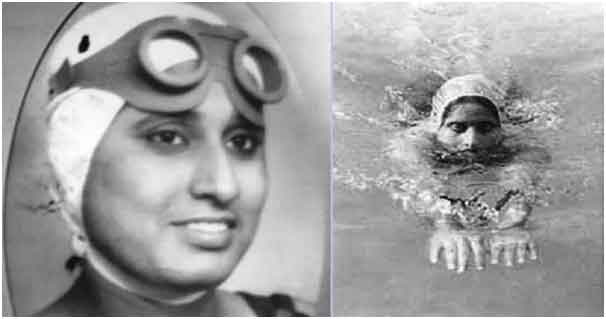
Arati Saha is amongst the most legendary woman in Indian sport’s history. She deserves a biography written about her. She received her main inspiration from swimmer Brojen Das.She excelled in the National swimming competitions and was given great assistance and encouragement by Mihir Sen.Aarti took part in long distance swimming competitions in the Ganges.On 29th September 1959 she became the 1st Indian woman to make a successful Channel crossing. She failed on her first attempt but brilliantly resurrected herself to triumph in the end. To practice Arti used to train for eight hours in the pool at Deshbandu park.Later she wnt on to do a 16 hour swim.
On 24 July 1959, she left for England along with her manager Dr. Arun Gupta. She started her final practice in the English Channel on the 13 August. During this time, she was mentored by Dr. Bimal Chandra, who was also participating at the 1959 Butlin International Cross Channel Swimming Race.
A total of 58 participants including five women from 23 countries took part in the competition. The race was scheduled for 27 August 1959 at 1 am local time from Cape Gris Nez France to Sandgate, England. However, the pilot boat of Arati Saha did not arrive in time. She had to start 40 minutes later and lost the optimum condition. By 11 am, she had swum more than 40 miles and came within 5 miles of the England coast. At that point she faced a strong current from the opposite direction. As a result, by 4 pm, she could only swim about two more miles. While she was still determined to carry on, she had to quit.
In spite of the failure, Arati was determined not to give up. She prepared herself for a second attempt. Her manager Dr. Arun Gupta was ill, but she carried on with her practice. On 29 September 1959, she made her second attempt. Starting from France, she swam for 16 hours and 20 minutes, battling tough waves and covered 42 miles to reach England. On reaching the coast of England, she hoisted the Indian flag.
SOME GREAT ACCOMPLISHMENTS AT THE ENGLISH CHANNEL
A great story of Channel swimming was that of 11 year old Tom Gregory swimming it at the age of 11.He wrote a most illustrative and soul searching autobiography of his experience of crossing the Channel. He recounted how he practiced for over 8 hours daily in Lake District and never had a warm water bath for over a year. The relationship he describes with his coach has the subtleness or intensity of a romance.
Quoting the Guardian ‘This memoir revolves around Gregory’s account of that swim, and he makes no bones about how horrendous it was. At various points he fell asleep, hallucinated, developed agonising shoulder and hip pain, and cried so much that his goggles filled with water. If you are thinking: “Who would put a young kid through an experience like that?” the answer is Bullet, a maverick coach who ran the swimming club in Eltham, south-east London.
Bullet motivated his young proteges with equal parts eccentricity and charisma. Training involved gruelling sessions in the pool, followed by open-water swimming camps in Dover and the Lake District. They were fed tinned Spam and marrowfat peas, slept in leaky tents, and undertook challenges that would strike fear into the fittest adult. At the age of eight, Gregory was plunging into the icy sea by Dover harbour; at 10, he swam the length of Windermere, 11 miles long and colder than the Channel.’
The story of Gertrude Ederle also is a must read, like an event that shook the earth. Ironically she only learned to swim properly at the age of fifteen. In 14 hours 31 minutes she completed the course.
In terms of timing of sheer speed Anita Sood and Bijoy Jain were true icons., whose performances rank with the most phenomenal of all Channel performances.Bijoy achieved it in the then fastest time of any Asian in 1983 of 8hs 42 mins,while Anita recorded the fastest time by any women and amongst the 5 quickest timings ever when crossing the channel in a time f 8 hours 15 mins..It was rare ever to witness such a machine or powerhouse like Anita who simply skimmed through in the manner of a motorboat. I can’t forget the tireless sessions they both spent training.
In 1994 the story of Rupali Repale is that of a phoenix rising from the Ashes. It was heart touching how person living in a 2 room tenement achieved such glory at the youngest ever age of 13 years.Inspite of minimal preparation sand inadequate support she skimmed through the channel waters successfully. Her father was mathadi worker who became a truck cleaner.Rupali toiled for hours in the municipal pool. and went on to swim the 5 more straits of the world.
Kutraleeshwaran from Tamil Nadu was the sheer male equivalent if Rupali Repale conquering the 7 seas including the English Channel and the Palk Straits. Ironically he conquered the Channel on Independence day,August 15th.In his post-swim interview he expressed how he found practicing in the sea or river waters much more productive than in the swimming pool. “While I was practicing at the English Channel, other swimmers would come and tell me to go back to India and that crossing the channel was an impossible task. But the same people came back on August 16 and told me that I had proved them wrong,” Kutraleeshwaran reminisced. His evolution into a long distance swimmer is also an epic of a kind.I praise his statement “”Swimming should be like walking. Every Indian should know how to swim. If swimming is taught in all the schools, then the sample size will grow bigger, thus paving the way for more talented swimming champions,” he said.
In recent years Gauri Singhvi from India in Udaipur completed the Channel at the youngest age of 16 years in a time of 13 hours 26 mins. Gaurvi’s training, which started two years ago, included yoga, meditation, ground training, speed and endurance training. Two months before her achievement, she had completed a 14-hour practice swim in the lakes of Udaipur. “I trained her for six months and used to make her swim four km every day,” said Sukhbinder Singh, her speed and endurance trainer.
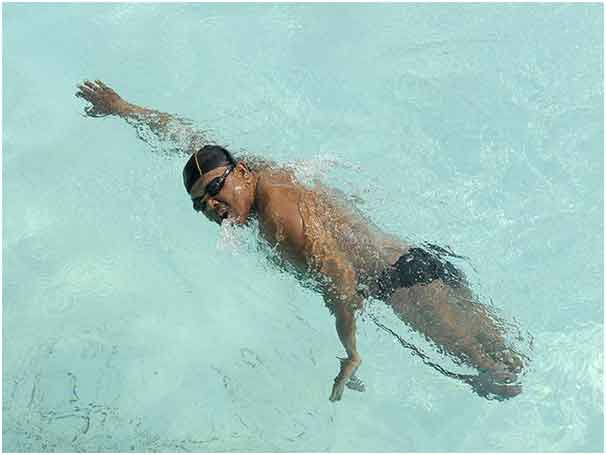
Masudur Rehman Baidya with amputated legs crossed the Channel in 1997, which was an achievement of unparalleled proportions. Having lost both his legs, knee downwards in a train accident at the tender age of 11, life could have ended for Masudur. Instead of resigning himself in discouragement, he decided to turn his life around and when he did so, the world was in awe. Born as a son to a Muslim Imam, who’s salary was merely Rs 250 a month, getting artificial limbs was quite a difficult ask for Masudur. His family, however, arranged it and in 1989, he was once again able to walk using artificial limbs. Being an astute sportsman, Masudur dominated whatever sports he pursued despite having a disability. His laborious training sessions at the swimming pool rewarded him the winner’s trophy in many inter-club competitions in Kolkata. It was then followed by many long-distance swimming opportunities, starting with a 14 km swim on the Hooghly river organized by the Ahiritola Youth Swimming Club in Kolkata where he stood 5th, followed by the world’s longest swimming competitions held in 1993 and 1995, where he swam 81 kms and stood in the 9th place the first time and 5th the second. The rest we know is that ‘he made history’ as he became the first male swimmer in the world to cross the English Channel without legs in 1997 and first Asian and second in the world to cross the Strait of Gibraltar in 2001 against all odds.
Srikant Vishwanathan became the oldest Indian to swim the Channel at the age of 46 and began his preparations 5 years before. In the Nainital lakes he was engrossed in gruelling practice sessions. He brilliantly narrated the manner in which he remained motivated throughout. “There are always distractions from work-related travel, family demands, injuries, sickness etc. During the course of 2 years, I had to set incremental goals & celebrate those small accomplishments to stay motivated. No major holidays, no weekends for the family for 2 years! It can be quite killing emotionally. More than anything, the biggest challenge that I faced was the disbelief expressed by some people in my attempt which constantly seeded the doubts in my mind. I had to dig in deep to stay focused & committed and use my intermediate goals to reassure myself that I am making progress towards my ultimate goal.”He also brilliantly illustrated his mental tenacity “This is one big factor that plays a dominant role in any endurance sport. As they say, Channel swimming is 98% mental & only 2 % is physical. When every muscle & every joint is writhing in pain after 6 hours of swimming in cold water, it all boils down to how strong we are mentally to not give up. I had severe cramps in my hamstring during the 7th & 13th hour of my swim and I almost gave up during those testing moments. Thanks to my crew & the burning desire in me to not give up, I could eventually conquer the pain. But, one needs to tame the mind during those long practice hours & learn to conquer the pain.”
Both Taranath Shenoy and Bula Chowdhary came within touching distance of completing the double way swim, but in the end were overpowered by the powerful channel currents that impeded their path of glory. We must congratulate the deaf and dumb Taranath for traversing all the waterways as well as Bula Chowdhary. Both displayed willpower or impetuosity at highest magnitude and exuded the aura of an invincible emperor conquering territory after territory., literally making one feel that they ruled the waters. Sports analysts must diagnose what prevented any Indian from making a double crossing f the Channel which few have done now. Significant how Bula rose up from such a lower middle class background and Taranath overcame the challenge of being handicapped.Bula was the first woman to cross the seven seas while Taranath, the first handicapped.
Another historic achievement was Lewis Pughs 49 day long swim covering 330 miles, including the English Channel as a leg at the conclusion. “This swim was not about being the first person to swim the length of the English Channel. I would describe it as a protest swim,” he said. “It was a swim done to highlight what’s happening in our oceans and to really try to get world leaders to understand how serious it is and how quickly our oceans are changing.”It is notable that Lewis aspiration was to render a service for mankind by saving the Sea, and not for personal laurels.
Recently US Marathon swimmer Sarah Thomas became the first person to complete a 4 way swim of the English Channel, in a time of 54 hours. Only four swimmers previously had completed a 3 way swim of it. Above all she recovered from cancer.
The marathon swimmer received the cancer diagnosis four months after an unprecedented August 2017 non-stop solo swim of 104.6 miles in Lake Champlain on the US-Canada border. She underwent treatment for the aggressive form of breast cancer — which had already begun spreading to the lymph nodes under one of her arms — in the summer of 2018, according to a fundraising website for a documentary about her achievements.
“I was at the peak of my athletic accomplishments… and then I got diagnosed with cancer,” Thomas said in a video posted on the Kickstarter website.
“It’s part of who I am now, part of my story. I just hope it never comes back but if it does, to know that I did everything I wanted to do in life.”
I was very impressed by Olympic coach James Counselman swimming the Channel at the ripe old age of 60.He was coached by Tom Hetzel,who himself swam the Channel on 12 occasions. Tom wrote a most inspiring book on the training and preparation for the Channel, giving due respect to all factors. Above all he highlighted the spiritual aspect or that of motivation, and not mechanical in approach.
I don’t have words to express my admiration for the Channel queen Alison Streeter,who has made the journey across Dover to Calais a record 43 times. Her 1988 Channel swim from France to England of set a female record of 8 hours 48 minutes. She was the first woman to swim the Channel three ways non-stop in 1990, taking 34h40 min for the feat.
Adding humour to this incredible experience is Comedian David Williams, who crossed it amongst the 50 fastest times ever. He had a preparation period for 11 months, practicing between 2 to 8 hours daily.
Finally I express great joy over Zhang Jiang , the 1st ever swimmer successful from the Peoples Republic of China in year 2001. in a time of 11 hrs .56 mins..He was the first ever Channel swimmer from a formally Socialist state. Earlier he had completed a record 108 km swim in the Bohai straits in 50 hours. An entire tem was organised to support his channel swim and greet him.Atlast a formally Socialist state recognised the worth of feats like swimming the Channel.
Zhang, a teacher of Beijing Sports University, said his hope of overcoming the 33.8-km channel was almost dashed after four hours. “I suffered some stiff muscles because the water is too cold,” he said. “I was very nervous. That never happened even when I had overtrained at home.” “But I told myself not to give up,” he said. “I must fight until the last gasp.”
Harsh Thakor was a former long distance swimmer who swam the English Channel in 1988 in 15hrs 2mins ,in addition to Uran to Gateway of India, Dharamtar To Gateway of India, Lake Zurich International and INS Hamla to Dadar Chowpatty.He was also associated with the civil liberties movement and different Communist revolutionary streams. later becoming a sympathiser of the T.Nagi Reddy line. Today he is a freelance journalist. Toured India, particularly Punjab .Written on Mass movements ,Massline,Maoism on blogs like Democracy and Class Struggle and frontierweekly .An avid cricket lover too who has posted writings on blogs like Pakpassion Indian Cricket Fans and Sulekha.com.Till the pandemic he still regularly swam for around 2 hours daily.

